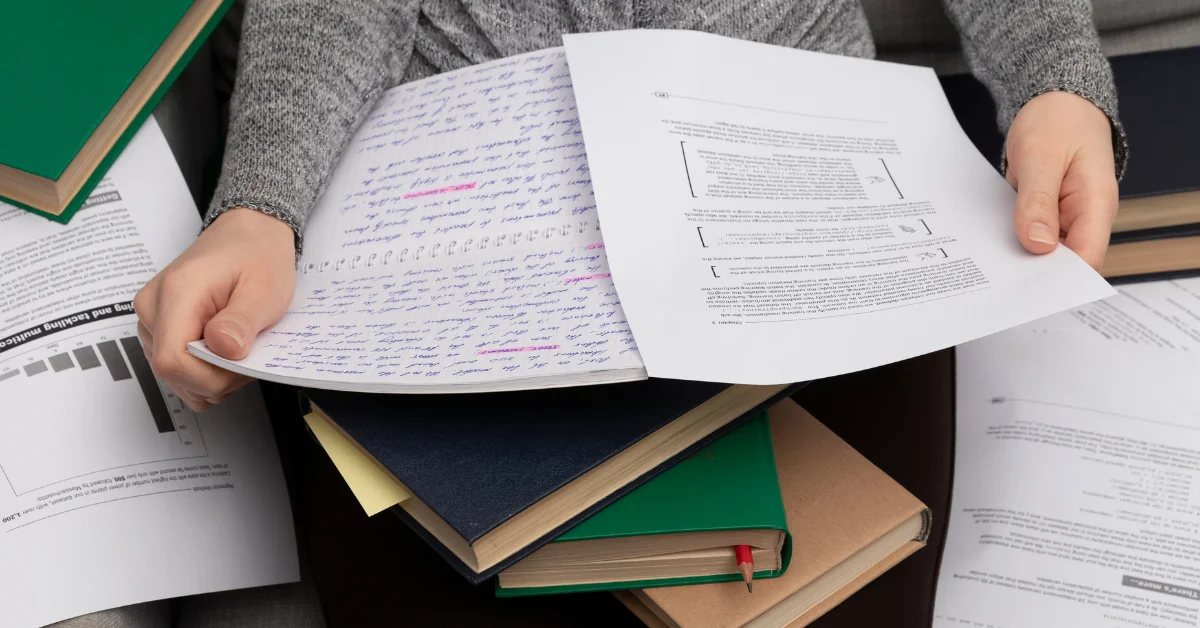RRB JE Mechanical Syllabus 2025: The Railway Recruitment Board will release the official notification for 2025 soon for the applicants. The board will recruit candidates for posts such as Junior Engineers (JE), Junior Engineers in Information Technology, Depot Material Superintendents (DMS), and Chemical & Metallurgical Assistants (CMA). In this article, we will provide a deep analysis of the RRB JE Mechanical Syllabus for the applicants.
RRB JE Mechanical Syllabus Overview
Candidates must understand the detailed overview of the exam as mentioned in the RRB JE Notification. The table below shows all the important details:
| Particulars | Details |
| Board | Railway Recruitment Board (RRBs) |
| Exam Name | RRB JE 2025 |
| Vacancies | To be released |
| Name of the Posts | Junior Engineer (JE), Junior Engineer (IT), Depot Materials Superintendent (DMS), Chemical & Metallurgical Assistant (CMA) |
| No. of Questions | CBT 1: 100 CBT 2: 150 |
| Duration | CBT 1: 90 minutes CBT 2: 120 minutes |
| Marking Scheme | 1 mark |
| Negative Marking | ⅓ mark |
| Selection Process | First Stage of CBT Second Stage of CBT Document Verification Medical Examination |
| Official Website | indianrailways.gov.in |
Main Topics for RRB JE 2025 Mechanical Syllabus
It is important to cover the main mechanical topics from the RRB JE Syllabus. Some of the important topics are outlined below:
- Engineering Mechanics
- Strength of Materials
- Welding
- Metrology
- Industrial Management
- Material Science
- Machining
- Grinding & Finishing Process
- Fluid Mechanics & Hydraulic Machinery
- Thermal Engineering
RRB JE Mechanical Engineering Syllabus 2025
Candidates must prepare every topic properly from the RRB JE Mechanical Syllabus. Some of the important topics and details are given below in the table for exam aspirants:
| Main Topics | Details |
| Engineering Mechanics | – Resolution of forces, equilibrium, and equilibrant – Parallelogram, triangle, polygon laws of forces, and Lami’s theorem – Couple and moment of a couple – Equilibrium conditions for rigid bodies under coplanar non-concurrent forces – Static and dynamic friction; limiting angle of friction and angle of repose – Forces on horizontal and inclined planes with friction – Moment of inertia and radius of gyration for I, channel, T, L (equal & unequal), Z, and built-up sections – Newton’s laws of motion (without derivation), projectile motion, D’Alembert’s principle – Law of conservation of energy and momentum |
| Material Science | – Mechanical properties: tensile/compressive strength, ductility, malleability, hardness, toughness, brittleness, impact strength, fatigue, creep – Steel classification: mild and alloy steels – Importance and processes of heat treatment: annealing, normalizing, hardening, tempering, carburizing, nitriding, cyaniding |
| Strength of Materials | – Stress, strain, stress-strain diagram, factor of safety – Thermal stresses, strain energy, proof resilience, modulus of resilience – Shear force and bending moment diagrams (cantilever, simply supported, continuous, fixed beams) – Torsion in shafts and springs, thin cylinder shells |
| Machining | – Working principle of lathe, types (e.g., engine lathe), construction and specs – Single-point cutting tool: nomenclature, geometry, functions – Lathe operations: turning, facing, taper turning, threading, knurling, forming, drilling, boring, reaming, keyway cutting – Cutting fluids, lubricants – Intro to shaper, slotter, planer, broaching, milling, gear manufacturing, heat treatment of gears |
| Welding | – Types, advantages, limitations of welding – Arc welding: principles, equipment, electrode selection – Gas (oxy-acetylene) welding: principles, equipment, procedures – Soldering & brazing: types and applications of solders/fluxes – Flame cutting processes: types, pros/cons – Welding defects, testing and inspection – Modern methods: submerged arc, CO₂, atomic-hydrogen, ultrasonic, MIG, TIG welding |
| Grinding & Finishing Process | – Metal removal by grinding; abrasives (natural & artificial), bonds (vitrified, silicate, shellac, rubber) – Types of grinding machines: cylindrical, surface, tool & cutter; construction and comparison – Centreless grinding: principles, pros/cons – Work holding devices, wheel maintenance, balancing, coolants – Finishing processes: honing, lapping, super finishing – Electroplating, hot dipping, galvanizing, tin coating, parkerising, anodizing, metal spraying (wire/powder) – Organic coatings: oil/lacquer/bituminous/rubber base |
| Metrology | – Linear measurements: slip gauges, dial indicators – Angular measurements: bevel protractor, sine bar, angle slip gauges – Comparators: mechanical, electrical, optical, pneumatic – Surface roughness measurement: comparison, tracer, interferometry – Measuring tools: collimators, measuring microscopes, interferometers – Inspection via shadow and profile projection |
| Fluid Mechanics & Hydraulic Machinery | – Properties: density, specific weight, viscosity, surface tension, compressibility, capillarity – Pascal’s law, pressure measurement, buoyancy – Reynold’s number, types of energy in fluids, Bernoulli’s equation – Flow measuring devices: venturimeter, pitot tube, current meter – Centrifugal pump: principle, construction, efficiencies (manometric, volumetric, mechanical, overall) – Cavitation effects, jet & submersible pumps (working with diagrams) |
| Industrial Management | – Job analysis, motivation theories, satisfaction, rewards – Production planning and control: routing, scheduling, dispatching – PERT and CPM with simple problems – Inventory control: ABC analysis, safety stock, reorder level, EOQ – Break-even analysis, store layout/equipment/records – Purchasing procedures, bin card, Cardex – Material handling: manual, hoist, cranes, conveyors, fork trucks |
| Thermal Engineering | – Thermodynamics: laws, perfect gases – Processes: isochoric, isobaric, isothermal, hyperbolic, isentropic, polytropic, throttling – Heat transfer: conduction, convection, radiation, Stefan–Boltzmann law – Air standard cycles: Carnot, Otto, Diesel – I.C. engine construction, systems, comparison (diesel vs petrol), performance – Air compressors and refrigeration cycles, refrigeration plant principles |
This blog aims to provide comprehensive insights into the RRB JE Mechanical Syllabus 2025. For more informative articles, visit the Oliveboard website!
RRB JE Mechanical Syllabus 2025 – FAQs
It includes topics from General Awareness, Mathematics, General Intelligence & Reasoning, and Mechanical Engineering.
It covers subjects such as Thermodynamics, Fluid Mechanics, Strength of Materials, and Manufacturing Processes.
Yes, different topics have varying weightages, and it’s important to review the detailed syllabus for specific details.
Focus on key topics, use standard textbooks, and practice previous year’s question papers.
It is divided into core mechanical engineering subjects, including topics like Heat Transfer, Production Engineering, and Machine Design.
Yes, CBT 1 generally covers General Awareness and General Intelligence, while CBT 2 focuses more on Mechanical Engineering topics.
- RRB JE Vacancy 2025 Out, Check New Vacancies for 2,588 Posts
- रेलवे परीक्षा की तैयारी करें, सारी जानकारी यहां देखें
- Why RRB JE Mechanical and Electrical Post is Best for Selection?
- Important RRB JE Computer Questions, Know Difficulty Level
- How RRB JE 2025 Preparation Can Help You Crack PSU, SSC JE?
- Benefits of Preparing RRB JE Notes, Know the Topics to Focus

Hello! This is Arijit Dutta. I am a skilled Content Writer at Oliveboard with nearly 3+ years of experience in crafting engaging, informative, and exam-focused content for the Railways Domain. With a strong command of language and a keen understanding of learner needs, I contribute significantly to Oliveboard’s mission of delivering high-quality educational resources. Passionate about clear communication and continuous learning, I consistently create content that helps government job aspirants achieve their goals. Outside of work, I enjoy playing cricket and listening to music, which helps me stay balanced and creative in my professional journey.
